
| Component | Description | Component | Description |
|---|---|---|---|
| Touch Screen Display | Interactive screen for browsing menus, selecting items, and placing orders. | Processor/Computer Unit | The central unit that runs the software and manages all processing tasks. |
| Payment Terminal | Device that supports various payment methods, including card, mobile payments, and contactless options. | Receipt Printer | Prints customer receipts, order details, and payment confirmations. |
| Kiosk Software | Operating system and custom applications that manage the user interface, ordering process, and transactions. | Barcode/QR Code Scanner | Scans barcodes or QR codes for promotions, loyalty programs, or quick product identification. |
| Enclosure/Chassis | The physical structure that houses and protects all internal components, designed for durability and security. | Connectivity Modules | Components like Wi-Fi or Ethernet for network connectivity and system updates. |
Touchscreen Interface: Intuitive touchscreens allow customers to browse menus, customize orders, and navigate through options easily.
Customizable Menus: The ability to display and update menus with various customization options, such as sizes, toppings, and special instructions.
Integrated Payment Systems: Supports multiple payment methods including credit/debit cards, mobile payments, and contactless options, facilitating smooth transactions.
Upselling and Cross-Selling Prompts: Features that suggest additional items or upgrades based on the customer’s selections to increase average order value.
Order Confirmation and Receipt Printing: Provides immediate confirmation of the order details and prints a receipt or sends a digital copy to the customer.
Data Analytics and Reporting: Collects and analyzes data on customer preferences, order trends, and peak times to help businesses make informed decisions and optimize operations.
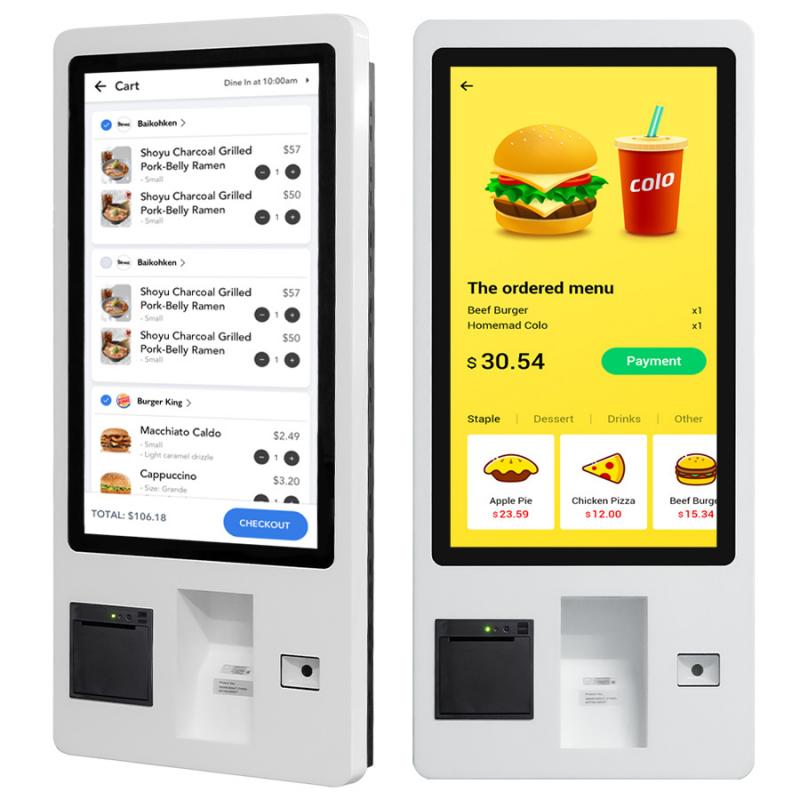
Fast-Food Restaurants: Streamline the ordering process, allowing customers to place and customize their orders quickly, reducing wait times and improving service efficiency.
Casual Dining: Enable diners to view menus, place orders, and make payments at their own pace, enhancing the dining experience and freeing up staff for other tasks.
Retail Stores: Facilitate quick purchases and order pickups, especially during busy periods or for special promotions, reducing checkout lines and improving customer satisfaction.
Cafes and Coffee Shops: Allow customers to place coffee and food orders, customize beverages, and pay without waiting in line, speeding up service during peak hours.
Airports and Train Stations: Offer travelers a convenient way to order food, beverages, and services while waiting for their flights or trains, improving overall travel experience.
Cinemas and Theaters: Enable patrons to purchase tickets, snacks, and drinks quickly before the show starts, minimizing lines and enhancing the overall experience.
Hotels: Provide guests with an easy way to order room service, book amenities, or check-in/check-out, streamlining guest services and reducing front desk congestion.
Theme Parks: Allow visitors to order food, reserve experiences, or purchase merchandise, reducing wait times and providing a more enjoyable park experience.
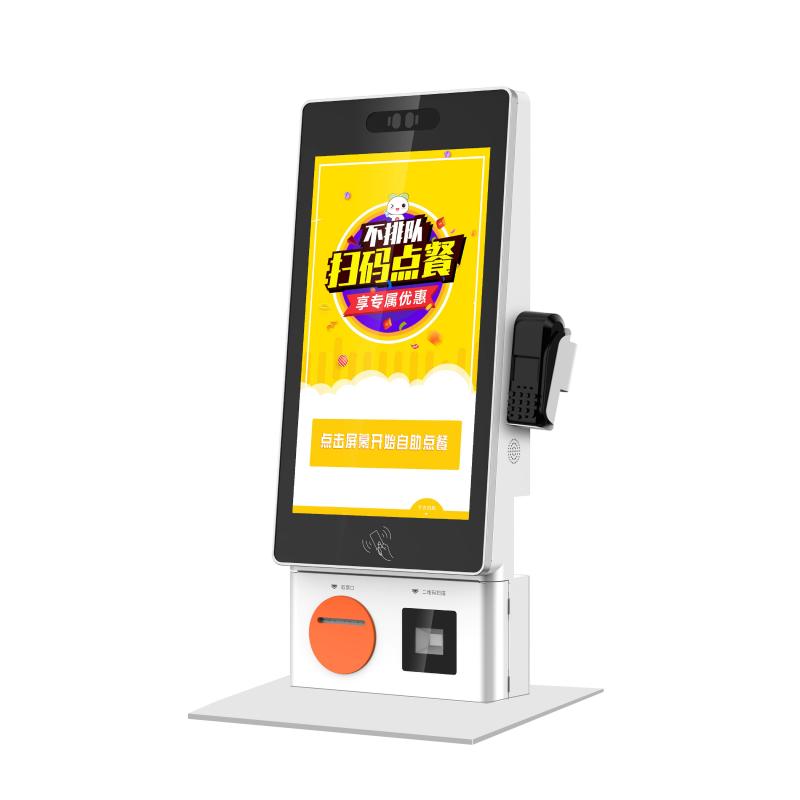
Self order kiosk address several critical challenges for businesses, enhancing operational efficiency and customer satisfaction. They significantly reduce wait times by allowing customers to place and customize their orders independently, which alleviates pressure on staff during peak hours. By automating the ordering process, kiosks improve order accuracy, minimizing mistakes that can occur with verbal or manual order taking. They also provide a streamlined payment process, accepting various payment methods and reducing transaction errors.
Additionally, self-order kiosks enhance the customer experience by offering an intuitive and user-friendly interface, allowing patrons to explore the menu at their own pace and make informed choices. The upselling and cross-selling features help increase average order values by suggesting relevant add-ons. Kiosks also generate valuable data on customer preferences and behavior, which businesses can use to optimize their offerings and marketing strategies. Overall, self-order kiosks solve issues related to service speed, accuracy, and customer engagement, leading to improved operational efficiency and higher customer satisfaction.
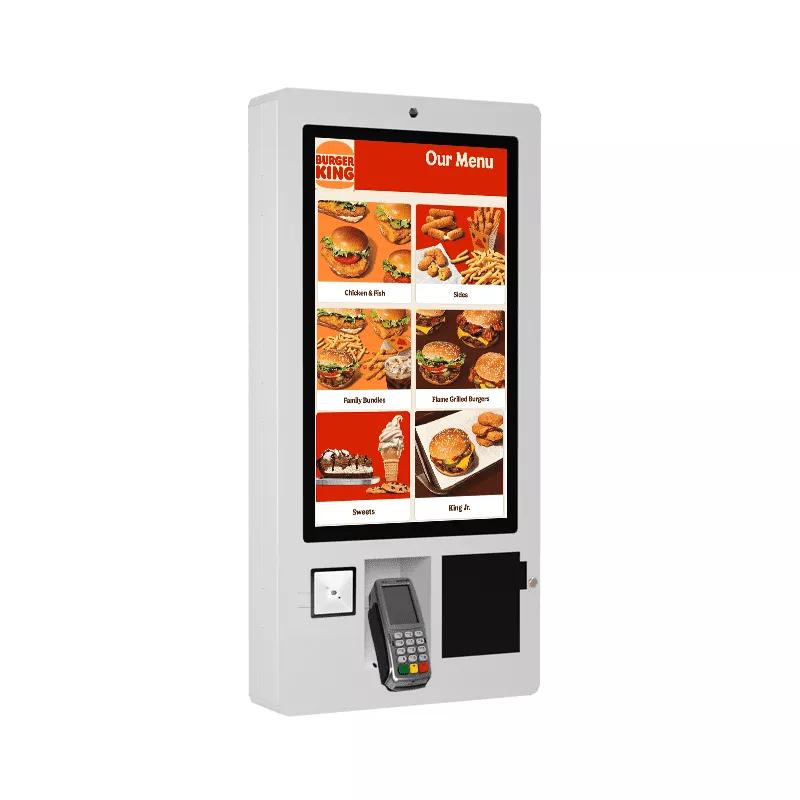
Reduced Wait Times: Self-order kiosks streamline the ordering process, allowing customers to place their orders quickly without waiting in long lines, enhancing overall service speed.
Increased Order Accuracy: Customers input their orders directly into the kiosk, reducing the likelihood of miscommunication and errors that can occur with manual order taking.
Labor Cost Savings: With kiosks handling order placement and payment, businesses can reduce their staffing needs for front-line roles, allowing staff to focus on other tasks.
Enhanced Customer Experience: The interactive and user-friendly interface of kiosks provides customers with a more engaging and personalized ordering experience, which can lead to higher satisfaction.
Upselling Opportunities: Kiosks can suggest additional items or upgrades based on the customer's selections, boosting average order value through effective upselling and cross-selling.
Data Collection and Insights: Self-order kiosks collect valuable data on customer preferences, order trends, and peak times, helping businesses make informed decisions and optimize their operations.
Consistency and Reliability: Kiosks provide a consistent ordering experience, ensuring that every customer interaction follows the same process, which helps in maintaining service quality and reliability.
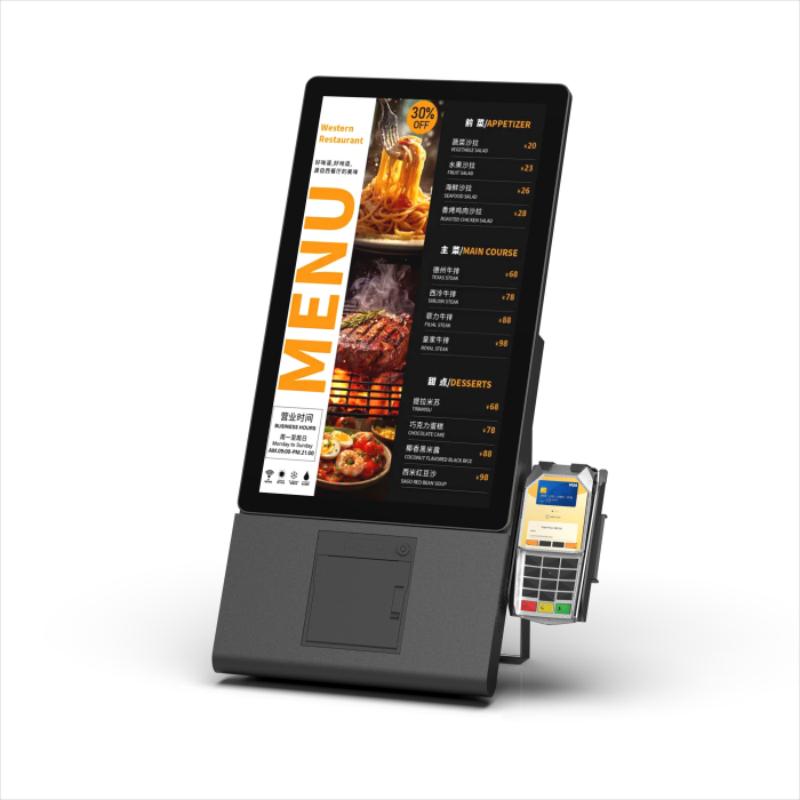
Our self-order kiosk design focuses on blending functionality with user experience to enhance customer interaction and streamline operations. We prioritize high-resolution touchscreens that offer clear, responsive navigation, ensuring ease of use for all customers. Our kiosks feature customizable interfaces to reflect your brand identity and adapt to various operational needs.
Our design incorporates ergonomic enclosures crafted from durable materials, ensuring long-term reliability and a sleek appearance. We integrate user-friendly elements like multilingual support and accessibility features to cater to diverse customer needs. Additionally, our kiosks come with efficient payment systems and receipt printers to complete transactions seamlessly.
By combining these elements, our self-order kiosks not only reduce wait times and improve order accuracy but also integrate smoothly with your existing systems, providing a modern, efficient solution for enhancing customer service and operational efficiency.
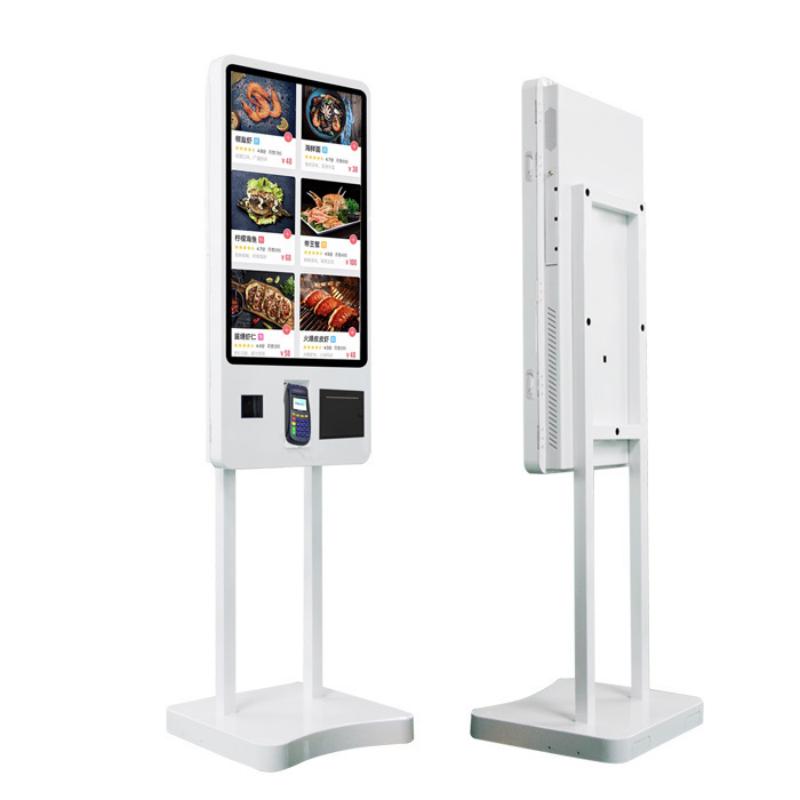
Define Your Requirements: Identify what you need in a self-order kiosk, including hardware specifications, software features, customization options, and integration with existing systems. Consider factors like the type of business, customer volume, and space availability.
Set a Budget: Determine your budget for purchasing a self-order kiosk. Include costs for the kiosk itself, software licensing, installation, maintenance, and any additional features or customization.
Research Vendors: Look for reputable manufacturers or suppliers of self-order kiosks. Evaluate their experience, product offerings, customer reviews, and support services. Compare different vendors to find the best fit for your needs.
Request Quotes and Proposals: Contact potential vendors to request detailed quotes and proposals. Ensure that the proposals cover all aspects, including hardware, software, installation, training, and ongoing support.
Evaluate Proposals: Review the quotes and proposals carefully. Consider factors such as total cost, features included, customization options, and vendor support. Check if the kiosk meets your specific requirements and integrates well with your current systems.
Negotiate Terms: Negotiate terms with your selected vendor, including pricing, payment schedules, delivery timelines, warranty, and support services. Ensure that all terms are clear and documented in the contract.
Place the Order: Finalize your purchase order with the chosen vendor. Confirm all details, including customization, delivery dates, and any additional services such as installation and training.
Installation and Training: Coordinate with the vendor for installation and setup of the kiosk. Ensure that your staff receives adequate training on operating the kiosk and troubleshooting common issues.
Monitor and Maintain: After installation, monitor the kiosk's performance and ensure it meets your expectations. Regularly maintain and update the kiosk as needed to keep it functioning smoothly and efficiently.
By following these steps, you can effectively purchase and implement a self-order kiosk that enhances your business operations and customer experience.
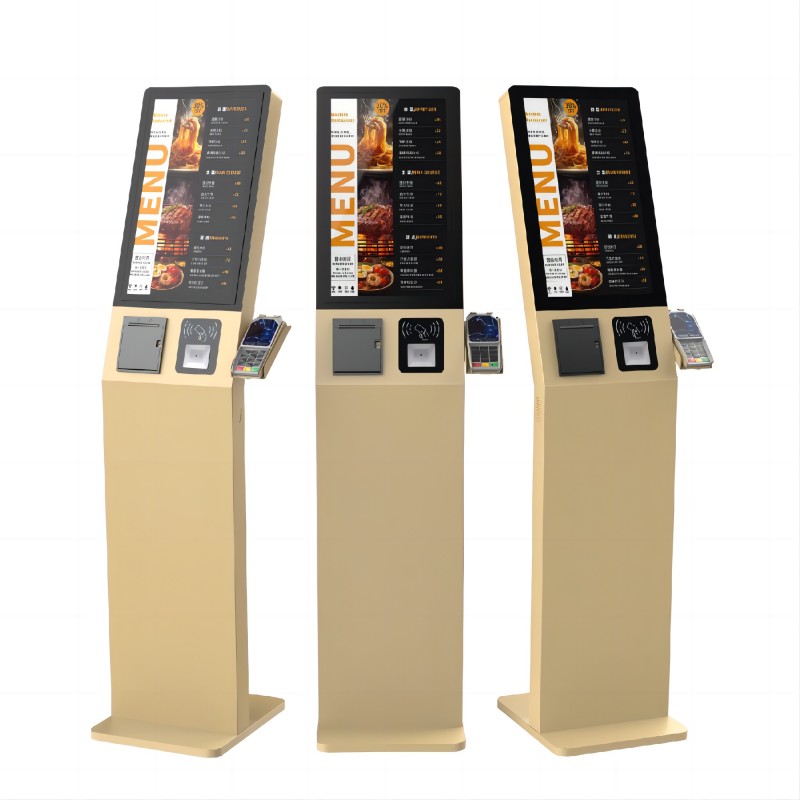
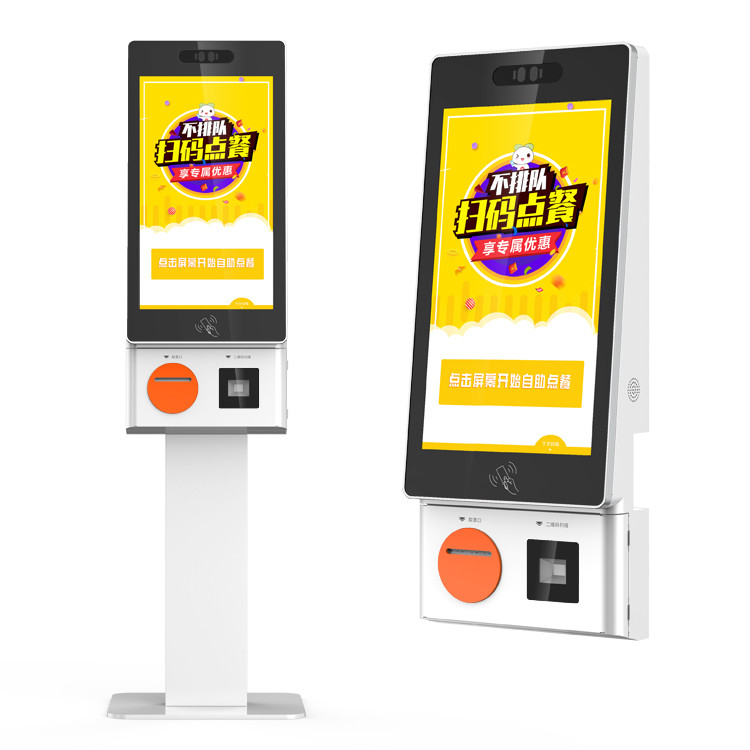
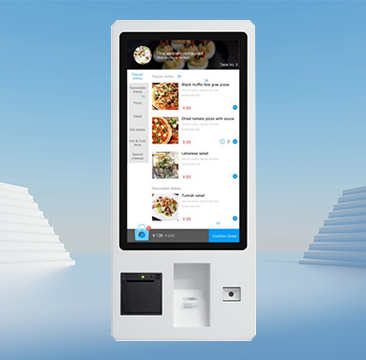
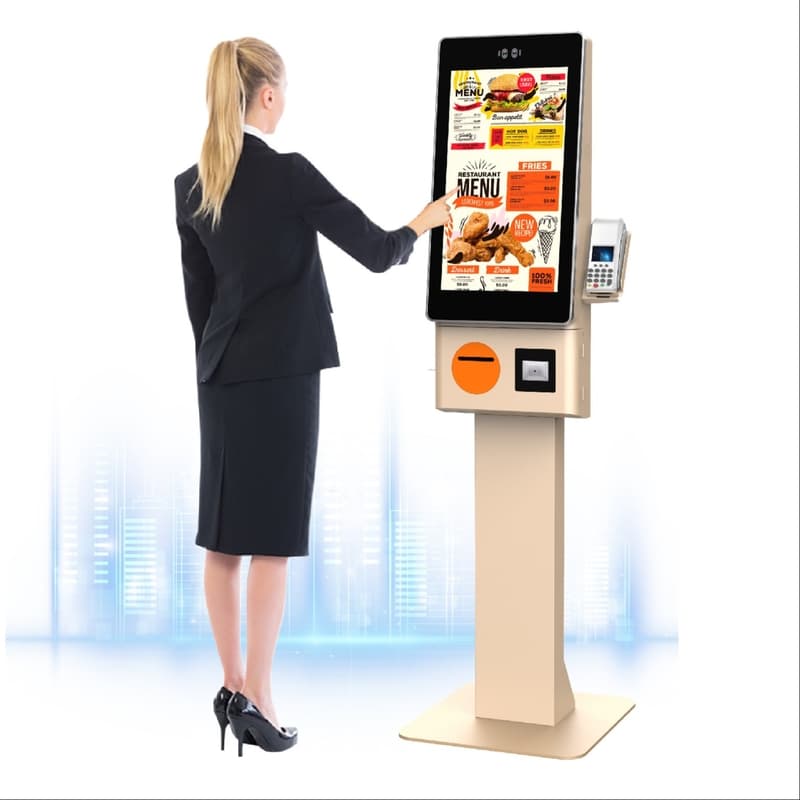
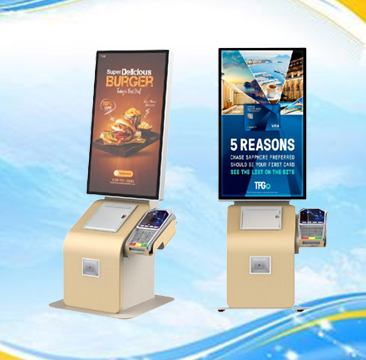
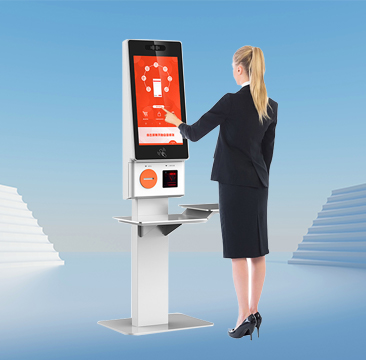
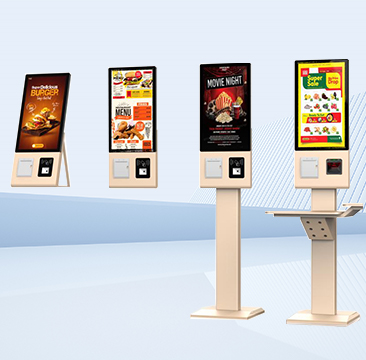

What did our happy clients say?
We’re thrilled with our new self order kiosk! They’ve streamlined our ordering process, reduced wait times, and boosted sales. Highly recommend for any business looking to enhance customer service.
Our self order kiosk have been a game-changer. They’re easy to use and integrate seamlessly with our systems. A big thank you to the vendor for the excellent support and timely installation.
The self order kiosk have exceeded our expectations. They’ve improved order accuracy and customer satisfaction. Great investment for efficiency—highly recommend to others in the industry!
We’re very pleased with our self order kiosks. They’ve made a significant difference in our daily operations. The vendor’s service was top-notch, and we’re grateful for the smooth experience.